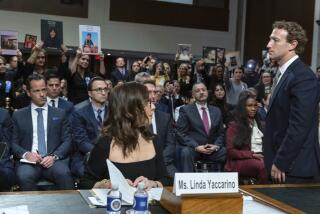A Firmer Hand on the Airlines : Without Turning the Clock Back, Deregulation Needs Revision
- Share via
Airline passengers are now going through a Christmas season of delays, lost baggage, disappearing discount fares and increasing fears over safety. This holiday greeting, many say, comes courtesy of “airline deregulation.” According to others, however, deregulation has produced a lower fares and a huge increase in the number of people flying. Perhaps now, on the 10th anniversary of deregulation, we ought to assess the value of the “gift” we received a decade ago.
Based on my experience in Congress and as secretary of transportation when deregulation was proposed, I knew that we needed to free airlines from the archaic system of regulation created in the early days of aviation. The federal government could not continue to dictate routes, determine fares and conduct detailed investigations of companies that carry the public. However, rapid deregulation, without a phase-in period to allow people to adjust, would be disruptive at best and could lead to an unregulated monopoly at worst.
Unfortunately, I won the argument about the need to deregulate but lost the one about the need to phase in the change. It is now clear that neither the Federal Aviation Administration, the Civil Aeronautics Board or the airlines were prepared for the rapid and radical changes that the aviation system has undergone.
The first important question is whether airline deregulation has reduced airline safety. Millions of new passengers are flying today; thousands of additional planes are in the air. Since we have not built a single new airport in 15 years, the airlines created a “hub-and-spoke” system to deal with the increased demand for service. This means that instead of routinely taking direct flights from one city to another, passengers can get from here to there only after making intermediate stops at hub airports. For example, almost half of the passengers flying in and out of Minneapolis are merely passing through on their way to another destination. That may make economic sense for the industry; but, since most accidents occur either on landing or takeoff, the increase in intermediate stops tends to create safety problems.
Another problem involves the struggle to replace the air-traffic controllers fired during the 1981 strike. After seven years, we finally have as many controllers as we did in 1981; unfortunately, we have doubled the number of planes they have to control. If the increase in air travel continues at its present pace, and if the air-traffic system is not expanded, we will be going beyond the acceptable margin of safety.
Deregulation was supposed to increase competition and produce more airlines and lower prices. In the years immediately following deregulation, we did see a “boomlet” of new airlines. But they have all but disappeared. In 1978 there were 15 major airlines; now there are eight. These eight airlines control 91.7% of the market, up from 74.1% in 1983. The same trend toward concentration is apparent in hub airports. In at least 10 large cities--including St. Louis, Minneapolis and Pittsburgh--one airline controls more than two-thirds of the traffic. The Reagan Administration’s record of approving 17 out of 18 major airline mergers between 1985 and 1988, and the prospect of additional mergers in the near future, suggest that this problem will only get worse.
The effect of this concentration is clear. While the price of flying between major cities has decreased, fares to medium and small-city markets have not gone down. The problem is even worse in hub airports dominated by one carrier: Consumers there can expect to pay as much as 50% more than people flying comparable routes in cities with some competition. In addition, because most of the low-cost lines are no longer in business, even the discount fares on popular routes are in jeopardy.
There are no easy answers to these safety or service questions. We cannot go back to the days of restricted airline certificates and government-approved fares. There are, however, actions we should take.
In the safety field, the first thing we need to do is increase oversight and inspections of airline operations. We need to hire and train more air-traffic controllers and aircraft inspectors and then put them where they are needed, even if that means providing bonuses at overcrowded facilities or where living expenses are high. We need to spend the money in the Aviation Trust Fund to expand and develop existing airports and airway facilities.
With regard to consumer service, we should first reverse the trend toward increased concentration in the industry by resurrecting and reinvigorating our antitrust-enforcement efforts. We must remove the barriers that limit airlines from entering new markets. Airline service will improve if airlines are forced to compete for passengers’ business; consumer satisfaction will increase if fares bear some relationship to the distances traveled, or some other objective criterion.
The debate over the pros and cons of deregulation will not be laid to rest today, if ever. But one thing is clear: Deregulation should not be taken as a license for lax safety enforcement or a laissez-faire attitude toward business practices. The need for careful government review remains. And if the government accepts and acts on that fact, that might be the best Christmas present airline passengers can receive.
More to Read
Inside the business of entertainment
The Wide Shot brings you news, analysis and insights on everything from streaming wars to production — and what it all means for the future.
You may occasionally receive promotional content from the Los Angeles Times.










